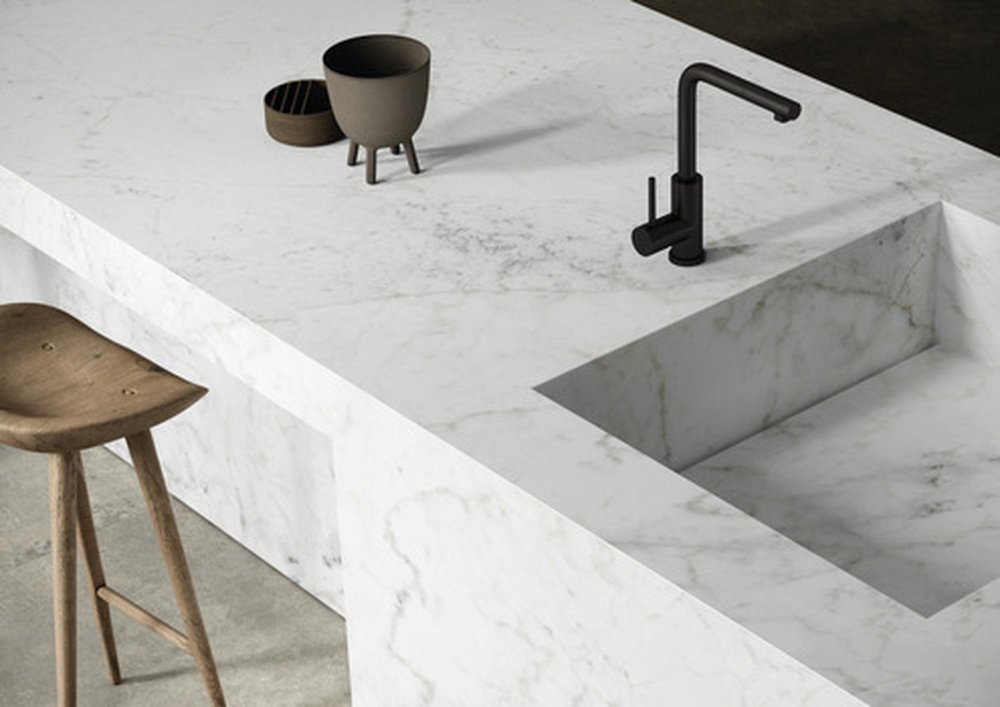When it comes to kitchen remodeling, few elements make as big of an impact as the countertops. If you’re considering quartz, you’ve already chosen a material that is durable, low-maintenance, and effortlessly elegant. But now comes the big question: should you go with 2cm or 3cm quartz?
Inspired by Martha Stewart’s rich and descriptive approach to design, this guide will walk you through everything you need to know about quartz thickness, so you can make an informed choice for your dream kitchen.
Understanding Quartz Countertop Thickness
Quartz countertops are available in two standard thicknesses: ✔ 2cm (¾ inch) – Lightweight, versatile, and often used in contemporary designs. ✔ 3cm (1 ¼ inch) – More substantial, durable, and ideal for luxury kitchens.
Each thickness has its advantages, and your decision will depend on aesthetics, durability, installation, and cost.
💡 Pro Tip: Before choosing, consider your kitchen’s overall design style, cabinet strength, and budget.
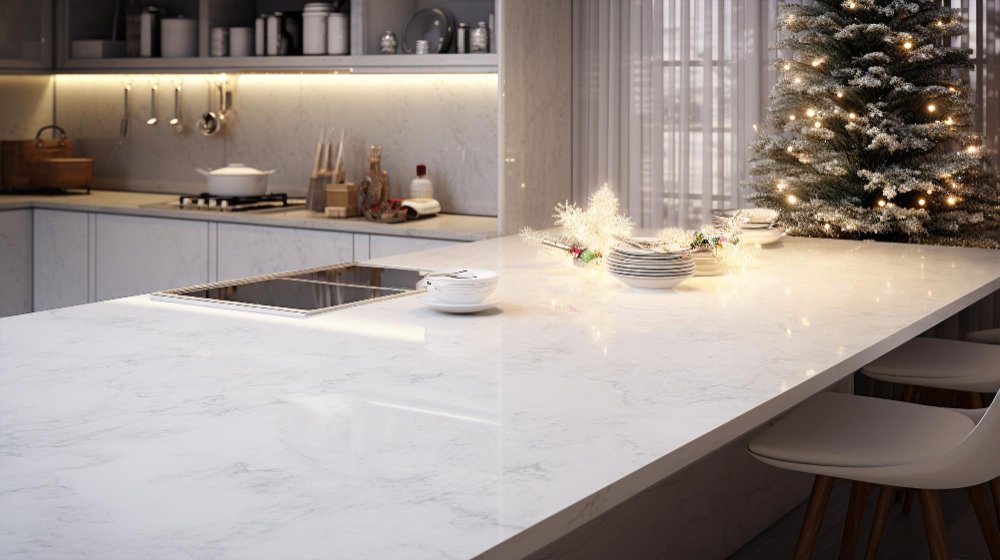
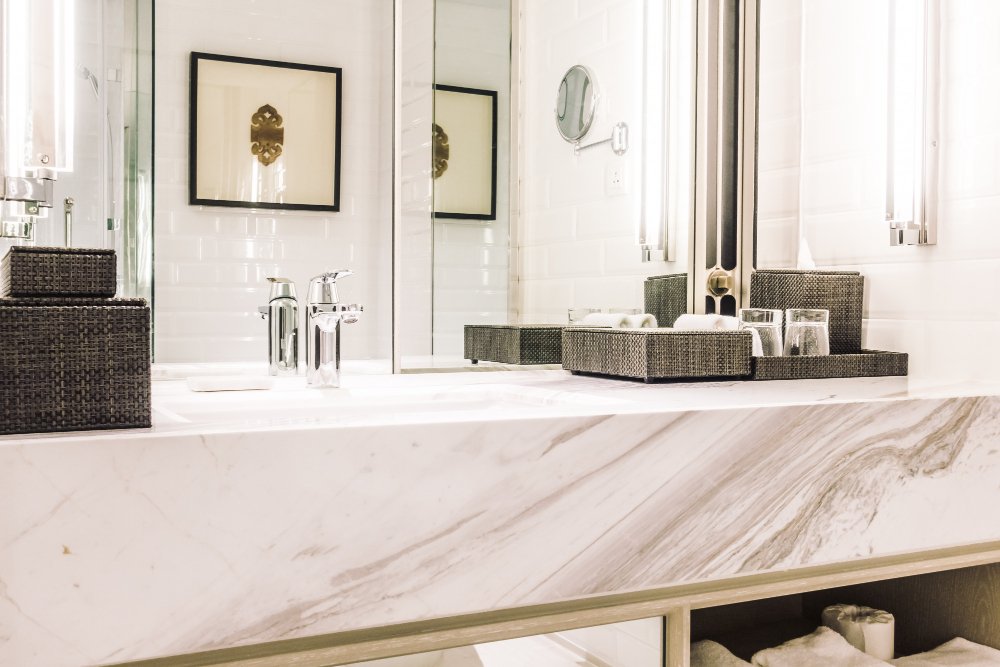
Aesthetics: The Look & Feel of 2cm vs. 3cm Quartz
Your countertop thickness plays a significant role in your kitchen’s visual appeal.
2cm Quartz – Sleek & Modern
✔ Best for: Minimalist, European-inspired kitchens. ✔ Features: Thin, streamlined, and elegant. ✔ Pairs Well With: Contemporary cabinetry, floating countertops, and waterfall edges.
3cm Quartz – Bold & Substantial
✔ Best for: Traditional, high-end, or farmhouse kitchens. ✔ Features: Thick, luxurious, and robust. ✔ Pairs Well With: Classic cabinetry, grand kitchen islands, and high-traffic cooking spaces.
💡 Pro Tip: If you love the thick look but prefer 2cm quartz, consider a mitered edge, which gives the illusion of a thicker slab.
Durability: How Quartz Thickness Affects Strength
While both 2cm and 3cm quartz are durable, the added thickness of 3cm makes a difference in certain situations.
✔ 2cm Quartz:
- Requires plywood support underneath.
- Best for bathroom vanities, backsplashes, and floating shelves.
- Works well in low-traffic kitchens.
✔ 3cm Quartz:
- Stronger and more impact-resistant (no plywood required).
- Ideal for high-traffic kitchens, islands, and heavy-use areas.
- More resistant to chipping and breakage.
💡 Pro Tip: If you have freestanding vanities or floating countertops, opt for 3cm quartz to eliminate the need for additional support.
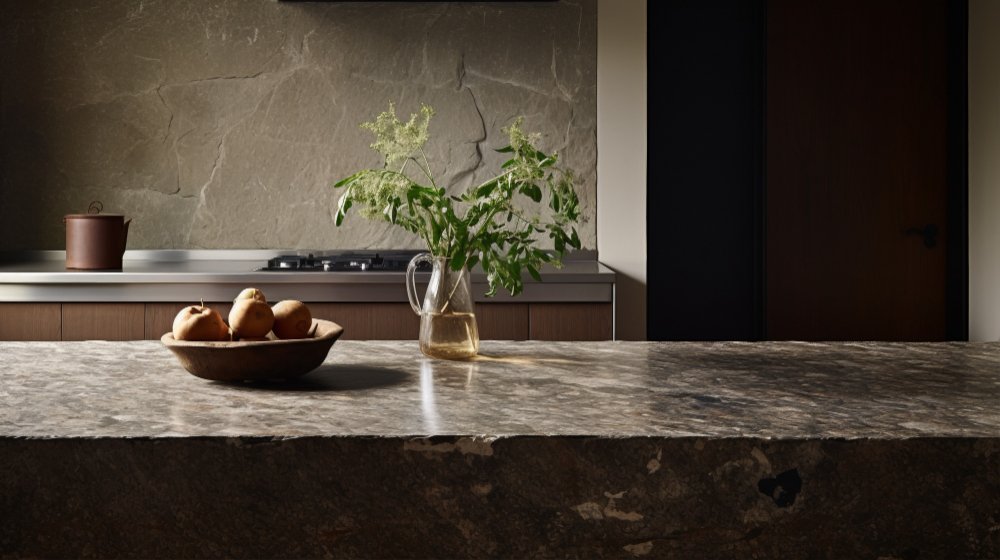
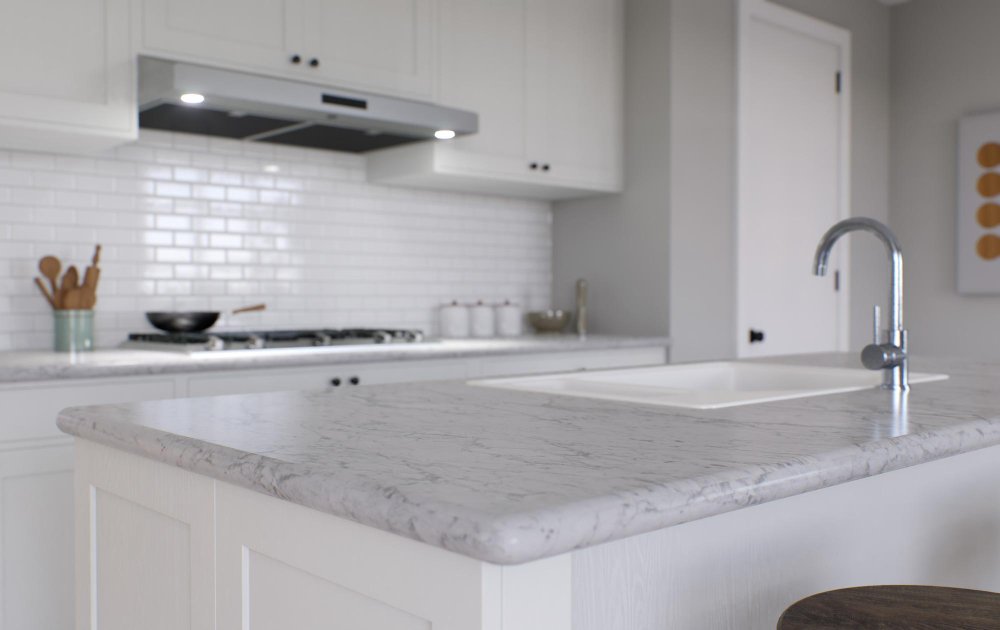
Installation: What to Expect
Installation plays a key role in your kitchen remodel timeline and cost.
✔ 2cm Quartz:
- Lighter weight makes it easier to handle.
- Needs additional plywood support under cabinets.
- More affordable installation due to fewer material costs.
✔ 3cm Quartz:
- Self-supporting, eliminating the need for plywood backing.
- Heavier weight requires reinforced cabinets.
- Higher labor costs due to the additional weight and difficulty of installation.
💡 Pro Tip: If your kitchen cabinets are older or less sturdy, 2cm quartz with added plywood support may be a safer choice.
Cost: Which Thickness is More Budget-Friendly?
Budget is a major factor in any kitchen remodel, and quartz thickness affects pricing.
✔ 2cm Quartz:
- Typically 15-20% cheaper than 3cm.
- Lower material costs + reduced weight = lower installation fees.
- Works well for budget-conscious renovations.
✔ 3cm Quartz:
- Higher material cost but offers a luxury, high-end look.
- More durable and longer-lasting investment.
- Requires fewer seams and support structures, which can offset costs.
💡 Pro Tip: If you’re on a budget but love the look of thick countertops, use 2cm quartz for peripheral countertops and 3cm for the island centerpiece.
Read More in Kitchen Promise Blog
- Cabinet Refacing in Rocklin: Is It the Right Choice for Your Kitchen Remodel?
 Should you reface or replace your cabinets? This comparison guide breaks down the pros, cons, and costs of cabinet refacing vs. replacement for your Rocklin kitchen remodel.
Should you reface or replace your cabinets? This comparison guide breaks down the pros, cons, and costs of cabinet refacing vs. replacement for your Rocklin kitchen remodel. - 2cm vs. 3cm Quartz: Which Thickness is Best for Your Kitchen Remodel?
 Not sure whether 2cm or 3cm quartz is right for your kitchen remodel? This rich and descriptive guide breaks down the pros, cons, and design impact of each thickness.
Not sure whether 2cm or 3cm quartz is right for your kitchen remodel? This rich and descriptive guide breaks down the pros, cons, and design impact of each thickness. - Sacramento Kitchen Plumbing: A Real-Life Remodeling Journey
 Transform your kitchen with high-end features like smart appliances, quartz countertops, and professional-grade cooking equipment. Luxury upgrades that add value.
Transform your kitchen with high-end features like smart appliances, quartz countertops, and professional-grade cooking equipment. Luxury upgrades that add value.
Final Verdict: Which Quartz Thickness is Right for You?
The right choice between 2cm vs. 3cm quartz depends on your kitchen style, budget, and durability needs.
| Feature | 2cm Quartz | 3cm Quartz |
|---|---|---|
| Aesthetic | Sleek, modern, minimal | Bold, high-end, luxurious |
| Durability | Requires plywood support | Self-supporting & more resistant |
| Installation | Lighter, easier to install | Heavier, requires reinforced cabinetry |
| Cost | More budget-friendly | Higher-end investment |
| Best For | Contemporary kitchens, bathrooms | Traditional, farmhouse, and high-traffic kitchens |
💡 Pro Tip: If you’re torn between the two, mix and match—use 2cm quartz for backsplashes and bathroom vanities while opting for 3cm quartz for kitchen countertops.
Final Thoughts: Making the Best Choice for Your Kitchen
Both 2cm and 3cm quartz are excellent options for a kitchen remodel, offering durability, beauty, and longevity. The choice ultimately depends on your design preference, lifestyle, and budget.
✔ For a modern, cost-effective solution → Choose 2cm quartz. ✔ For a luxurious, ultra-durable kitchen → Opt for 3cm quartz. ✔ For a balanced approach → Use both strategically for the best of both worlds.
By making the right selection, you’ll have a stunning, functional kitchen that stands the test of time!

